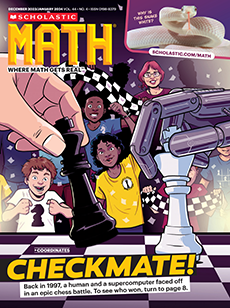Do you know where you will be on April 8? I will be somewhere near Lake Placid, New York. Hopefully there will be a clear view of the sky! I’ll have my camera ready to take pictures of the total solar eclipse. A total solar eclipse occurs when the moon passes between the sun and Earth, completely obscuring the sun’s light.
An event of this kind happens, on average, every 18 months somewhere on this planet. But on April 8, the next solar eclipse will be visible in North America, and totality—the time when the sun is completely covered by the moon—will last up to 4 minutes and 28 seconds. That’s twice as long as the 2017 solar eclipse!
It was in 2017 that I witnessed my first total solar eclipse. As an avid hiker and photographer, I traveled to Grand Teton National Park in Wyoming to backpack in the mountains and photograph the eclipse. On the day of the eclipse, I set up my camera on the side of a mountain and documented as the moon slowly passed in front of the sun. The experience was so magical, I was instantly hooked!
